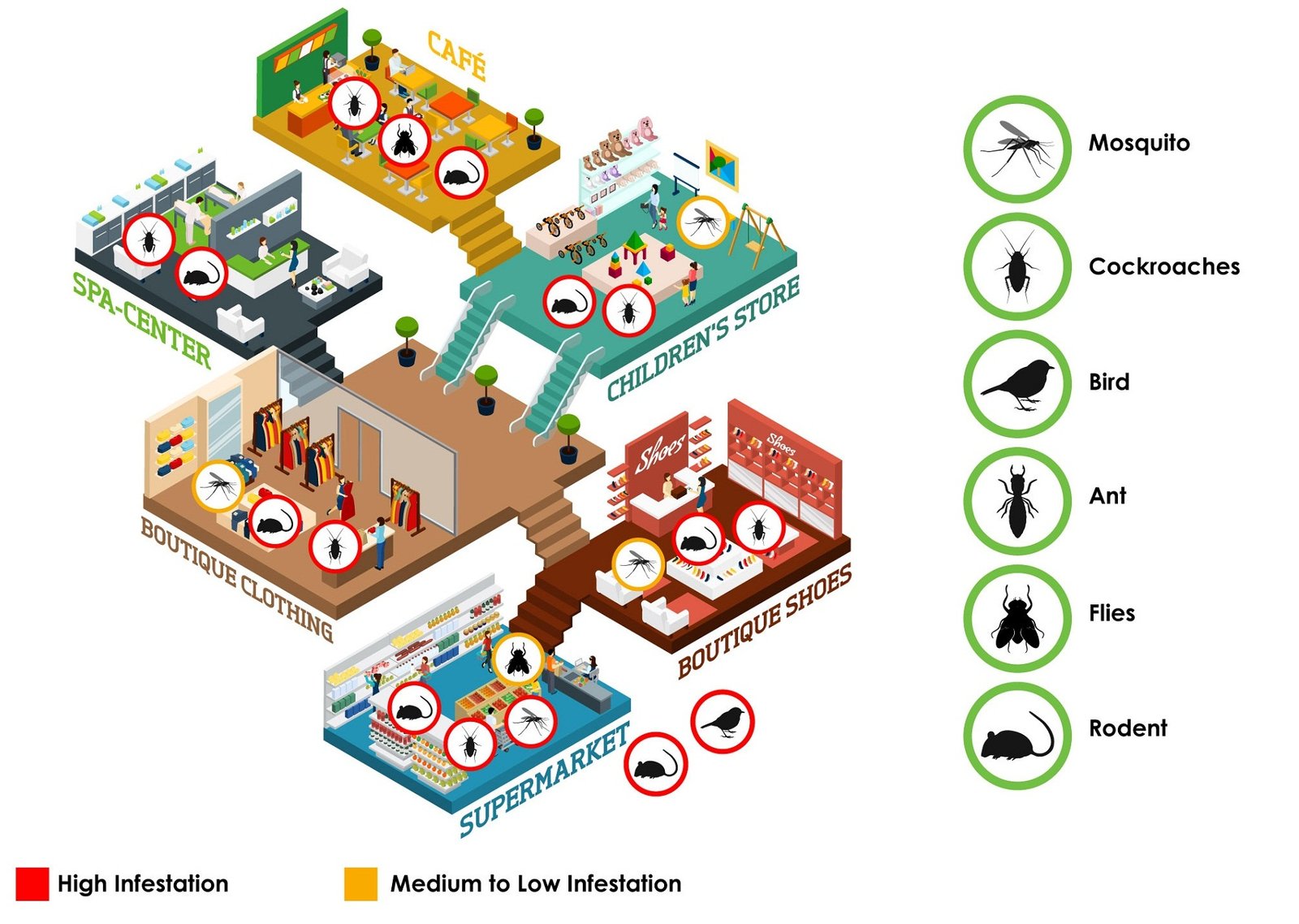- Claims for compensation
- Heavy loss in profits and sales
- Damage to customer trust and reputation
- Closure potentially by regulatory authorities
These issues can easily threaten a both side to the point of business closure. Urban Junggle understands the importance of keeping pest free facilities of the retail and mall owner. We also understand your hard work and commitment we deliver to customers to stand in the way of success. Therefore, it is the biggest responsibility to ensure traceability, product safety and consumer information. Depending on the requirement of your facility, we determine which pests are at-risk for your reputation and materials. For example, receiving docks are at risks for cockroaches, rodents, flying insects and birds.

Retail Pest Protection
Urban Junggle provides pest services to multi-site customers with some of the methods below:
(1) Design of firm
Our pest control starts with the construction and design of the building, including the external layout and construction materials which repels pests and deny access through doors, vents, drains, pipe work, etc and minimize the risks.
(2) Training and Practices
To prevent the infestation of pest, including cultural, physical and chemical methods, actions are needed to be planned like;
- Hygiene control: removal of food sources such as waste, spills and improperly stored food; Removal of harbourage;
- Chemical Control: It eliminate pests with safe and approved pesticides suitable for the storage of business, displaying and preparing packaged and where members of the public present.
- Cultural control: to prevent change, responsible persons, monitoring, responsible persons, reevaluation and documentation of activities.
To detect the presence of pests in fittings, equipment, stored and displayed products and incoming supplies, in and around buildings during an inspection regime;
(3) Monitoring and Maintenance
Implement control measures that provide the most effective results and ensure safety:
Appoint trained personnel to be responsible for each area of control measures. This may include the appointment of internal or external experts to monitor pests;
Assign adequate resources to implement measures;
Implement control measures and oversight regimes according to plans; Record actions and results according to standards and legislative requirements.
(4) Give Feedback
When pest outbreaks occur, a clear identification of pests is required to determine the most appropriate control methods and preventive actions necessary to avoid reintegration.
There are six basic questions to ask about an insect and the dangers it presents for food security:
- What is an insect species?Different species of closely related pests have different behavior and biology that will require tailored treatment for best results.
- Where does the insect come from?It arrived at the delivered goods or entered or attracted the building due to structural defects, poor maintenance, poor sanitation, decaying goods, etc.
- What harm does it cause?It pose a food safety risk for fresh, prepared or packaged goods; damage fittings or building structures.
- Where are they?Conduct inspections in and around the building using a qualified pest control person who will understand the pest and identify harborage locations.
- How many areEstimating the amount of pests will not only indicate the extent of the problem, but also how long they have been established on the premises.
- Why are the insects there?Pests may exist due to supplier or transportation problems, or environmental conditions that encourage or trigger insect infection.
(5) Evaluation
Evaluate the effectiveness of the pest control program. This may include:
- Investigating pest control operations;
- Review documentation;
- Reviewing operational procedures to reduce food sources, harbors and contamination;
- Recommend changes and improvements to the IPM program.
- Review preventive maintenance procedures;
- Apply recommended changes to the IPM program.

